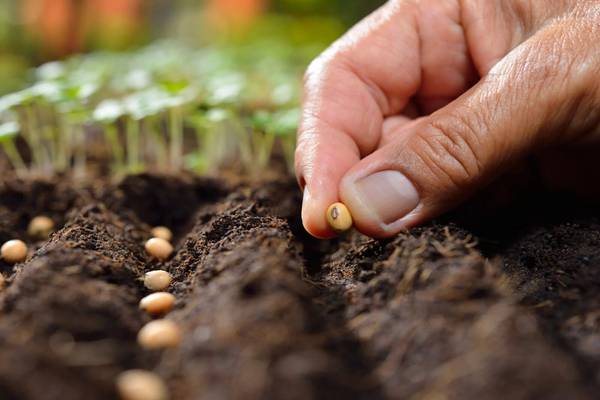Understanding Of Seed Equipment
Drafted by: vijaychourey26@gmail.com
Seed equipment plays a crucial role in modern agriculture, aiding farmers in achieving efficient and precise planting. This article will explore the different types of seed equipment, their benefits, maintenance tips, and effective usage methods. By the end, you will have a comprehensive understanding of how seed equipment optimizes farming practices and boosts agricultural productivity.
What is Seed Equipment?
Seed equipment refers to a range of agricultural machinery and tools designed to facilitate the planting of seeds in the soil. It replaces traditional manual methods and allows farmers to sow seeds evenly and at specific depths, ultimately enhancing crop yield.
Types Of Seed Equipment
Seed Drills
Seed drills are one of the most common types of seed equipment. They are capable of planting seeds in straight rows and at consistent depths. Seed drills are suitable for a variety of crops and are known for their efficiency in large-scale farming operations.
Seed Spreaders
Seed spreaders, also known as broadcast seeders, are ideal for sowing seeds over a wide area. They disperse seeds uniformly across the field, making them suitable for covering large plots of land quickly.
Seed Planters
Seed planters are specialized machines that enable farmers to plant individual seeds with precision. They are often used for crops that require specific spacing, such as vegetables or certain grains.
Seed Tenders
Seed tenders are mobile units used for transporting and dispensing seeds to planting equipment. They streamline the seeding process by eliminating the need for manual seed handling.
Importance Of Seed Equipment
Seed equipment is vital for several reasons. Firstly, it enhances planting accuracy, ensuring optimal seed placement for uniform germination. Secondly, it significantly reduces the time and labor required for planting, allowing farmers to focus on other essential tasks.
Moreover, using the right seed equipment can lead to increased crop yields, as it ensures seeds are planted at the correct depth and spacing, maximizing the use of available resources.
Factors To Consider When Choosing Seed Equipment
Farm Size and Type
The size of your farm and the type of crops you cultivate will influence the type and size of seed equipment required.
Seed Type
Different crops may have specific seed requirements, such as seed size or shape. Consider whether the equipment is suitable for the seeds you intend to plant.
Budget
Seed equipment can vary significantly in cost. Assess your budget and invest in equipment that offers good value for money while meeting your needs.
Precision and Efficiency
Look for equipment that offers high precision and efficiency in seed placement to maximize yield potential.
Maintenance and Support
Consider the availability of spare parts and support services for the equipment in case maintenance or repairs are needed.
Benefits Of Using Seed Equipment
Increased Productivity
Seed equipment enables faster and more efficient planting, increasing overall productivity on the farm.
Time and Labor Savings
Automated seed equipment significantly reduces the need for manual labor, freeing up time for other essential tasks.
Precision Planting
Precise seed placement ensures even germination and optimal plant growth, resulting in higher yields.
Better Seed Placement
Seed equipment allows for consistent seed depth and spacing, ensuring better utilization of nutrients and water.
Seed Equipment Maintenance Tips
Regular Cleaning
Regularly clean the equipment to remove debris and prevent clogging during planting.
Inspection and Repair
Inspect the equipment regularly for any signs of wear or damage. Address issues promptly to avoid equipment breakdowns during critical planting times.
Calibration
Calibrate the equipment before each planting season to ensure accurate seed distribution.
Lubrication
Keep all moving parts well-lubricated to reduce friction and wear.
Storage
Store the equipment properly during the off-season to protect it from the elements and extend its lifespan.
How To Use Seed Equipment Effectively
Preparing the Land
Ensure the field is well-prepared, free from weeds, and adequately tilled before planting.
Setting Up the Equipment
Follow the manufacturer's instructions to set up the equipment correctly.
Planting Technique
Maintain a steady pace while planting to ensure even seed distribution.
Adjusting Planting Rates
Adjust the planting rates based on the specific crop and field conditions.
Common Challenges And Troubleshooting
Seed Clogging
Seeds can sometimes clog the equipment, leading to uneven planting. Regular cleaning and calibration can help prevent this issue.
Uneven Planting
Incorrect equipment setup or calibration may result in uneven seed placement. Double-check the settings before planting.
Equipment Breakdowns
Mechanical failures can occur, especially if the equipment is not adequately maintained. Address issues promptly to minimize downtime.
Future Trends In Seed Equipment
Smart Technology Integration
Seed equipment is likely to incorporate smart technology, enabling automation, data collection, and remote monitoring for enhanced efficiency.
Sustainable Practices
Seed equipment manufacturers are expected to focus on sustainability, reducing environmental impact through efficient resource use.
Improved Precision and Mapping
Advancements in precision agriculture will lead to more accurate seed placement and field mapping.








